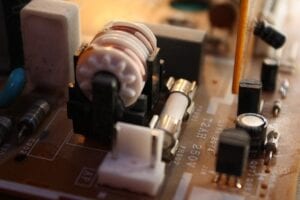In a previous blog regarding technology trends I wrote a short paragraph about the internet of things and my humble vision of it. However, looking back at my post and how this approach is becoming bigger (TV ads, Internet discussions, events), I have decided to give it another try and provide my personal understanding and view about this technology.
My first contact with the” Internet of Things” concept happened back in 2009 thanks to my Schneider Electric colleague Todd Snide and some investigations we made together about its potential applicable to mining operations, so, my post here tries to give a mining spin of the great post already published by Todd, (The “Internet of Things” and Automation).
We don’t need to look too hard to find a good and simple definition of this concept, since there are several sites, articles and presentations on the web. When delivering my personal definition of IoT…it is possible to say that any ordinary device can be an accessible node on this network (internet) and be able to deliver / receive pertinent information to/from other devices and trigger actions or deliver insights– One of the most famous examples (and maybe legendary) is about the refrigerator being able to identify the milk expiration date and trigger a purchase through the internet.
Internet of Things basic conceptAssuming that lots of ordinary objects will deliver lots of data (and such data can be filtered and analyzed to become information to drive decisions), it is not wrong to assume that another famous concept: The Big Data is completely related the IoT concept.
For further and detailed information, please, also refer to another colleague, Anthony Despirito, and his post “Schneider Electric and Cisco are Natural Partners in Delivering the Internet of Things”
But…what about mining?
If you came from the industrial automation world (like me) the combination Internet of Things and Big Data sounds slightly familiar. For many years, automation devices (control systems, meters, motor systems) have been exchanging (networked) information, performing tasks thanks to this exchange and feeding software systems able to gather and select the right data and deliver some decision making process – maybe today’s variation of this scenario is about how granular, wireless, diverse and integrated we can go – no longer are only industrial devices managing information, but any ordinary “stuff” from mine operations would be able to exchange some sort of data.
Internet of Things is a promising concept for the mining industryGoing to the RFID (Radio-frequency identification) landscape (RFID indeed is part of the IoT concept) we see straightforward applications for miners / personal / equipment tracking and some interesting systems for ore tracking (where disposable tags are mixed with the ore).
I understand that extremely advanced applications will be achievable with smarter self powered array of devices with the right network infrastructure, and computing / analysis capabilities.
Also, standardization (communication, security) from devices to systems will be required for a better integration of dissimilar systems and disciplines.
Potential Applications:
Since the internet of things involves everything, a good approach is try to explore some interesting possibilities and some of them with technology already in place:
Miners safety and emergency response– Integrating: People tracking, communications, video surveillance and analytics, real time personal health management , first responders integration and weather forecast (going for underground applications – gas monitoring, ventilation systems)
Mine Adaptive optimization – Integrating: Ore tracking, quality control, asset performance, mobile machine tracking , weather forecast, process controls , energy, fuel and water management
Smart Asset Management – Integrating: Condition monitoring (predictive maintenance), maintenance systems and purchase departments
The examples above give a snapshot of how promising such a concept can be – Each one of the systems and devices mentioned is loaded with information and can deliver it to another system in order to trigger “smart events”.
Too much information?
We like free data – The increased ability to add more low cost sensors and more systems will need to be associated to the ability to deal with it and drive smart decisions. In the end, the quantity of the information needs to be aligned with the quality of information.
In the end, the quantity of the information needs to be aligned with the quality of informationMy post is my personal view about this technology and its potential for mining (I just scratched the surface about such potential), so, your feedback will be welcomed to promote a good discussion!

Conversation
nicely written